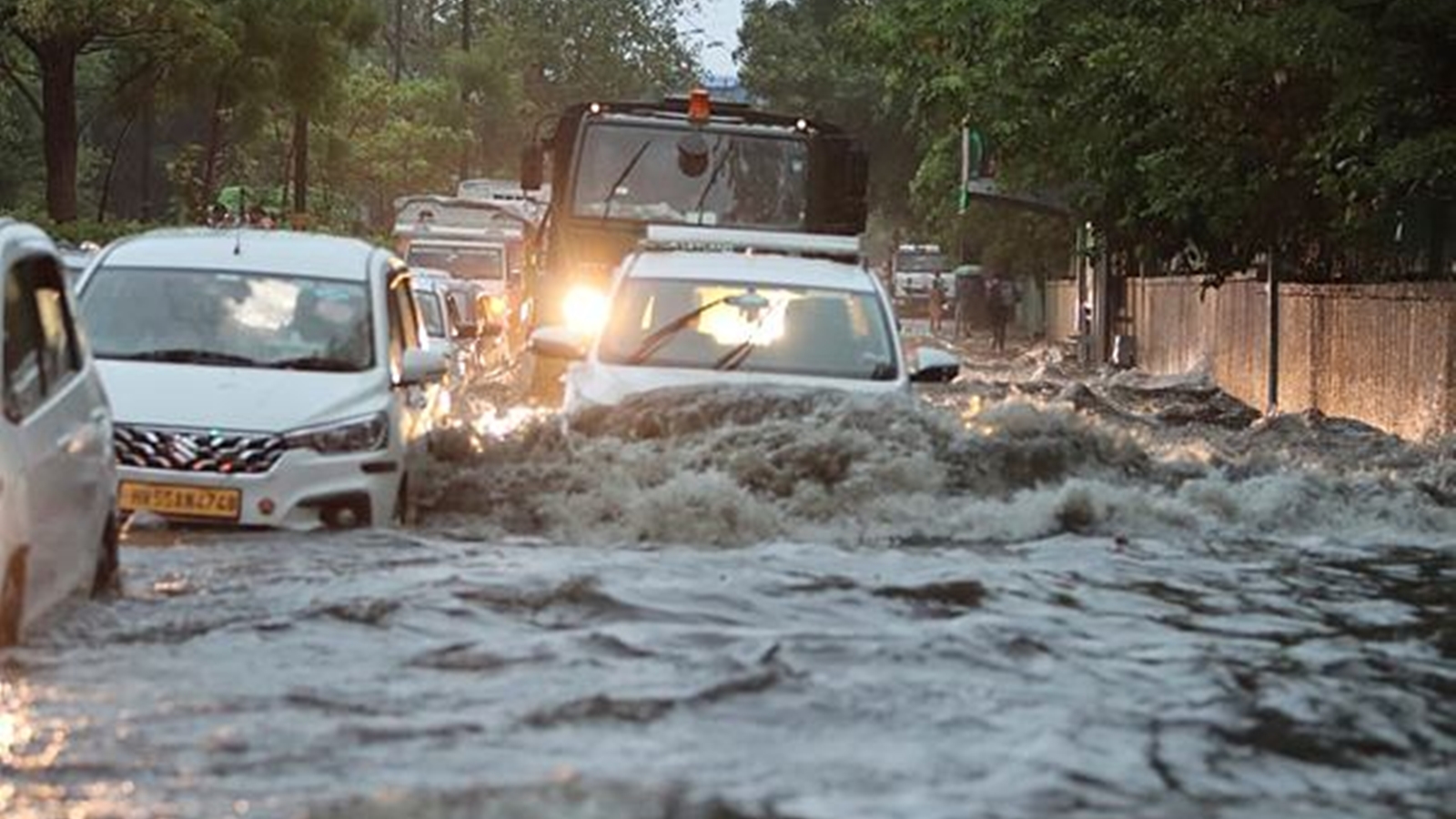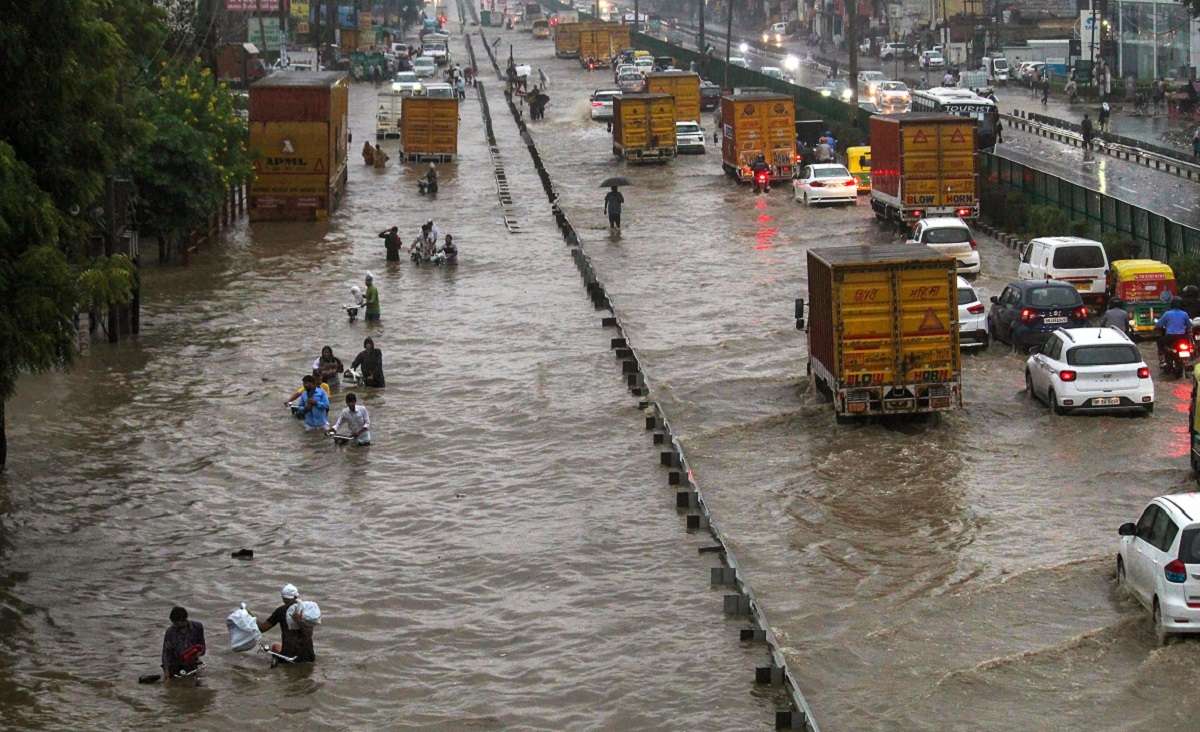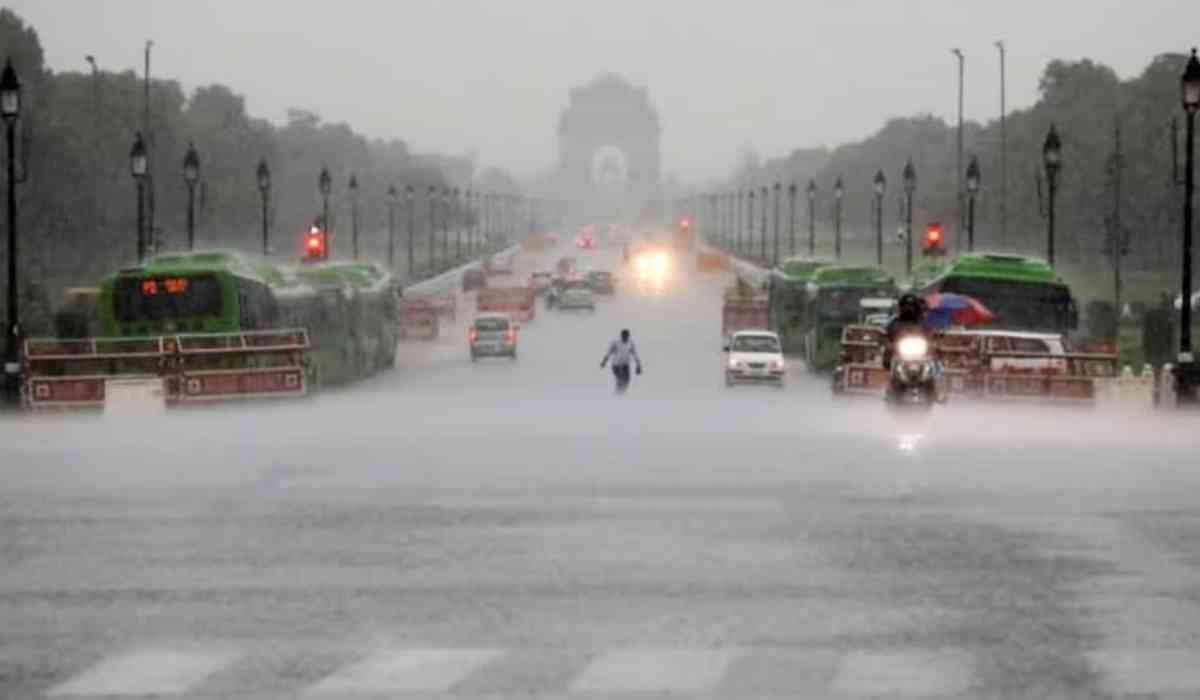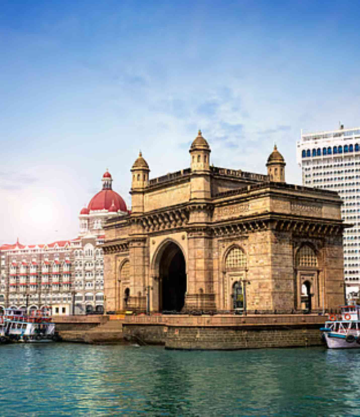As the nation grapples with intense rainfall and flooding, urban cities increasingly find themselves trapped by nature's wrath. Waterlogging and urban flooding have turned daily life into a living nightmare. While cities like Mumbai and Pune on the west coast have been battling the relentless downpours, the focus has now shifted to the national capital, Delhi. Moderate to heavy rains lashed parts of Delhi and Noida on Friday morning, July 26, causing severe waterlogging and traffic snarls across the cities. The India Meteorological Department (IMD) has issued a “yellow” alert for Delhi till Saturday, forecasting continued rain until July 28.

Capital in Crisis
Visuals posted by news agency ANI on X (formerly Twitter) vividly illustrate the chaos: heavy traffic jams on the Motibagh Ring Road due to waterlogging, and similar scenes at Bhikaji Cama Place, Nauroji Nagar, and Shanti Path. Even as officials scramble to address the crisis, their efforts seem futile against the backdrop of Delhi's creaking infrastructure. On Thursday, Delhi's main weather station, Safdarjung, recorded a rainfall of 19.1 mm in just three hours. The Lodhi Road and Pusa weather stations recorded 25.7 mm and 10 mm of rainfall, respectively, during the same period. The result? Inundated roads, waterlogged underpasses, and a city brought to its knees.
#WATCH | Delhi: Drone visuals of severe waterlogging near Saket metro station following heavy rainfall in the City. pic.twitter.com/CSwLEoMBM5— ANI (@ANI) July 26, 2024
The Rampura underpass in northwest Delhi's Keshavpuram zone was completely submerged, transforming into an impromptu swimming pool for local children. The Municipal Corporation of Delhi received at least 13 complaints of waterlogging and eight incidents of uprooted trees from different localities. Despite the IMD's forecasts and repeated warnings, the city's infrastructure remains woefully unprepared to handle such deluges.
Loss to Humanity: The Human Cost of Neglect
The rains have not just caused inconvenience; they have claimed lives. In north Delhi's Sadar Bazar area, a 45-year-old man named Pramod was electrocuted outside his hut following heavy rainfall. The tragic incident, which occurred on Wednesday, saw Pramod, originally from Samastipur in Bihar, declared dead upon arrival at HR Hospital. This is not an isolated incident. On June 27, another man died from an electric current in Delhi, and once again, no one was held accountable.
-Delhi : 27 June
-Delhi : 23 July
Both died due to electric current. No one was held accountable in the first case, and it seems unlikely that anyone will be held accountable in this recent case either.
Who says human life is precious? pic.twitter.com/ZA0jwQRIpN— Mr Sinha (@MrSinha_) July 24, 2024
Such incidents starkly highlight the negligence of those responsible for maintaining the city's infrastructure. When will officials be held accountable for these preventable tragedies? The death of Pramod and others like him underscores the systemic failure and indifference of the authorities. The rhetoric of human life being precious rings hollow when preventable deaths are met with bureaucratic inertia and apathy.
Urban Flooding: A Monumental Failure
Delhi's prominent hotspots, from Connaught Place to the Rashtrapati Bhavan road, are submerged, causing severe traffic congestion and immense inconvenience to residents. Public transport systems have been paralyzed, with even an NDMC garbage truck breaking down in the rain. Despite moderate rainfall, the city's drainage system failed spectacularly, exposing the lack of planning and investment in critical infrastructure.

It's not as if the situation was unforeseeable. The IMD's warnings were clear, and the monsoon season is an annual event. Yet, every year, Delhi's administration seems taken by surprise, reacting to crises rather than preparing for them. Waterlogged streets, uprooted trees, and stranded commuters are a testament to a city that is ill-equipped to deal with the forces of nature. The recurring theme of waterlogging and urban flooding in Delhi is a glaring indictment of the city's infrastructural inadequacies.
The Accountability Question
As Delhi residents wade through flooded streets and navigate treacherous, waterlogged roads, one must ask: where is the accountability? Year after year, the same problems arise, and year after year, the response remains the same—ineffective and insufficient. The lives lost, the property damaged, and the daily disruptions are the direct result of neglect and poor governance.
#WATCH | Delhi: Waterlogging witnessed at Connaught Place outer circle following heavy rains this morning. pic.twitter.com/9bMiFm9Dz5— ANI (@ANI) July 26, 2024 Until there is a concerted effort to address the infrastructural issues plaguing Delhi, the cycle of flooding, inconvenience, and loss of life will continue. It's high time that those in positions of power take responsibility and take meaningful action to ensure that Delhi's infrastructure is capable of withstanding the monsoon rains. The citizens of Delhi deserve better than this perennial state of unpreparedness and chaos.
Inputs by Agencies
Image Source: Multiple Agencies
Ⓒ Copyright 2024. All Rights Reserved Powered by Vygr Media.






















